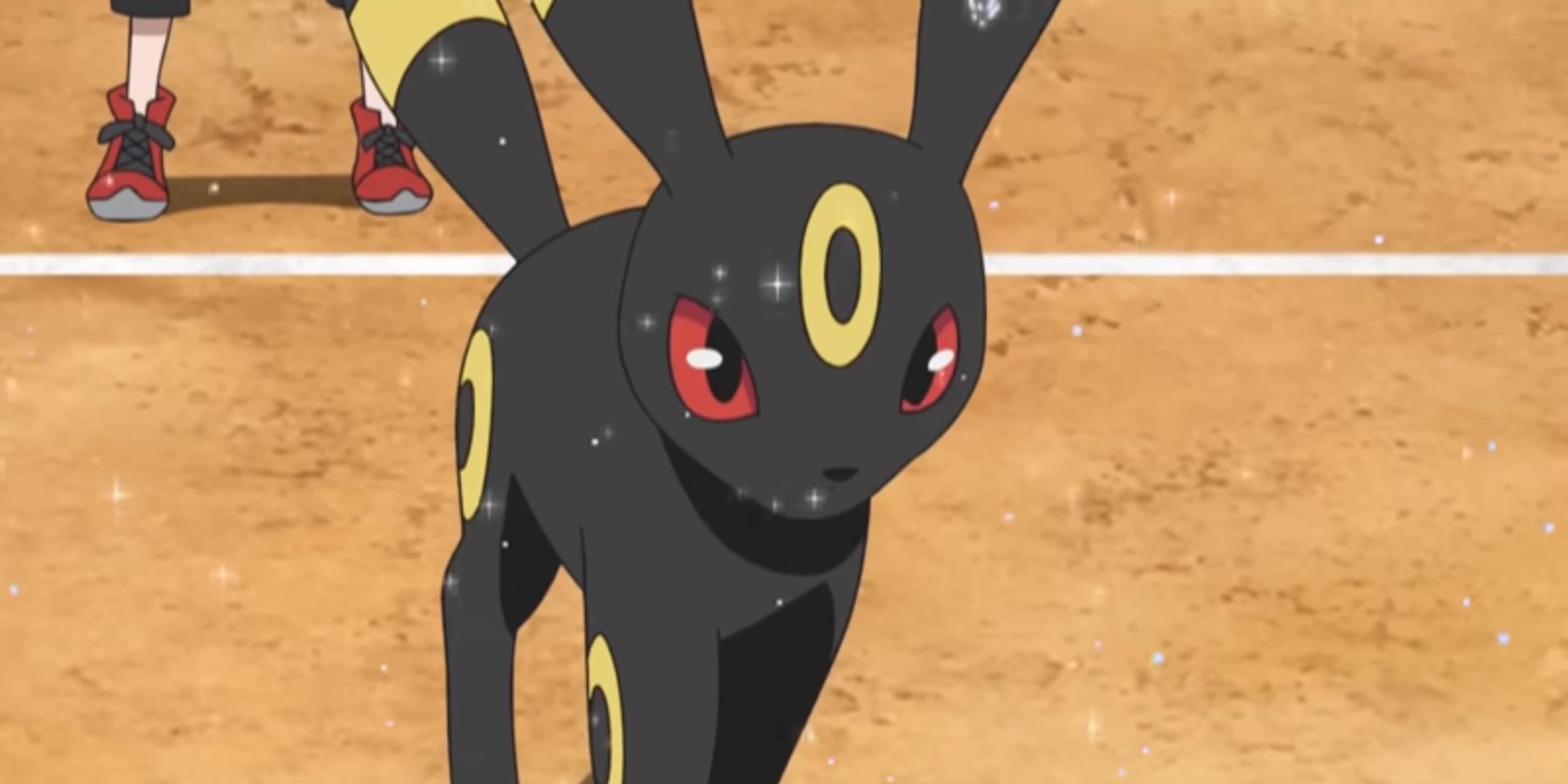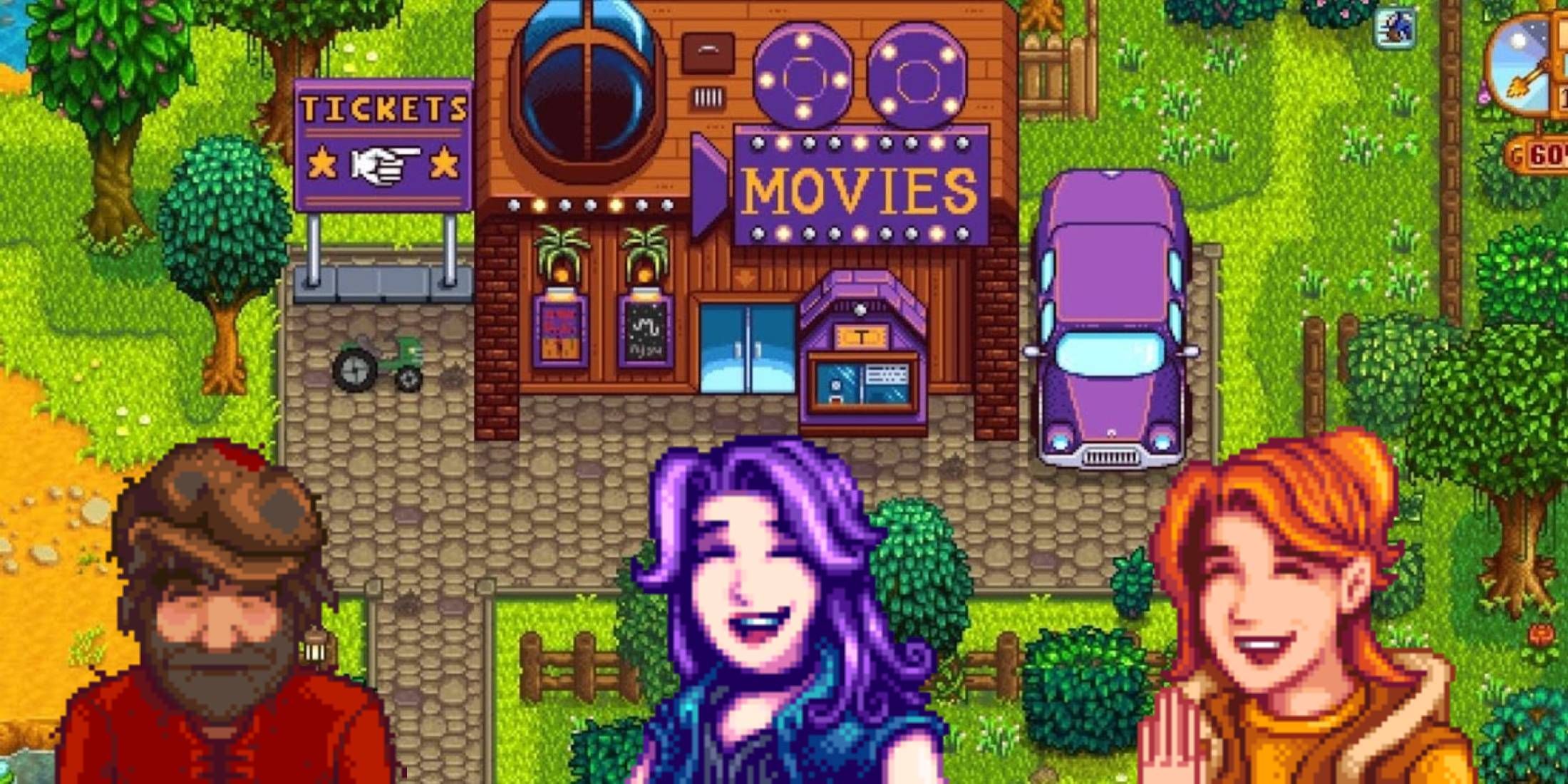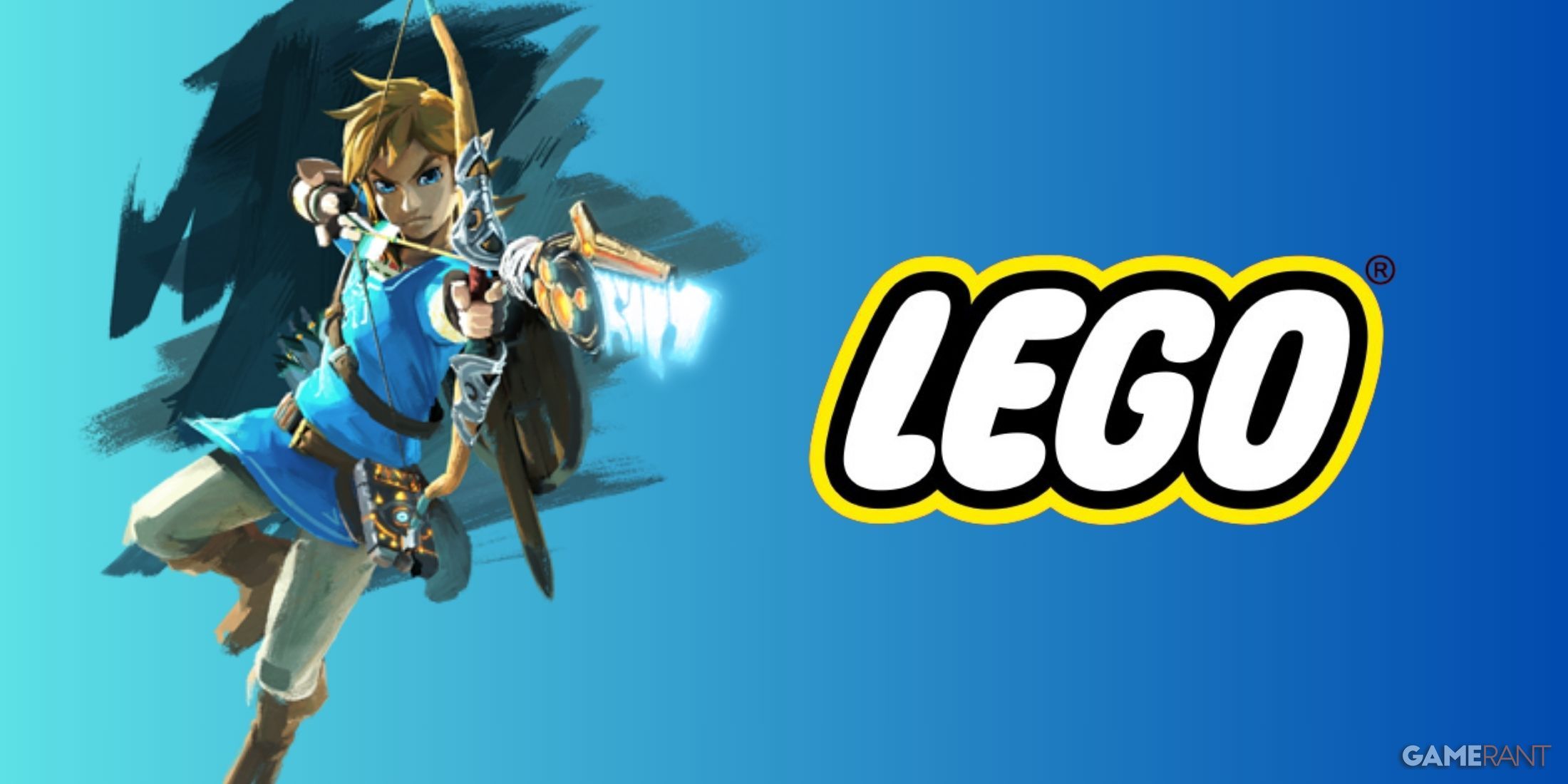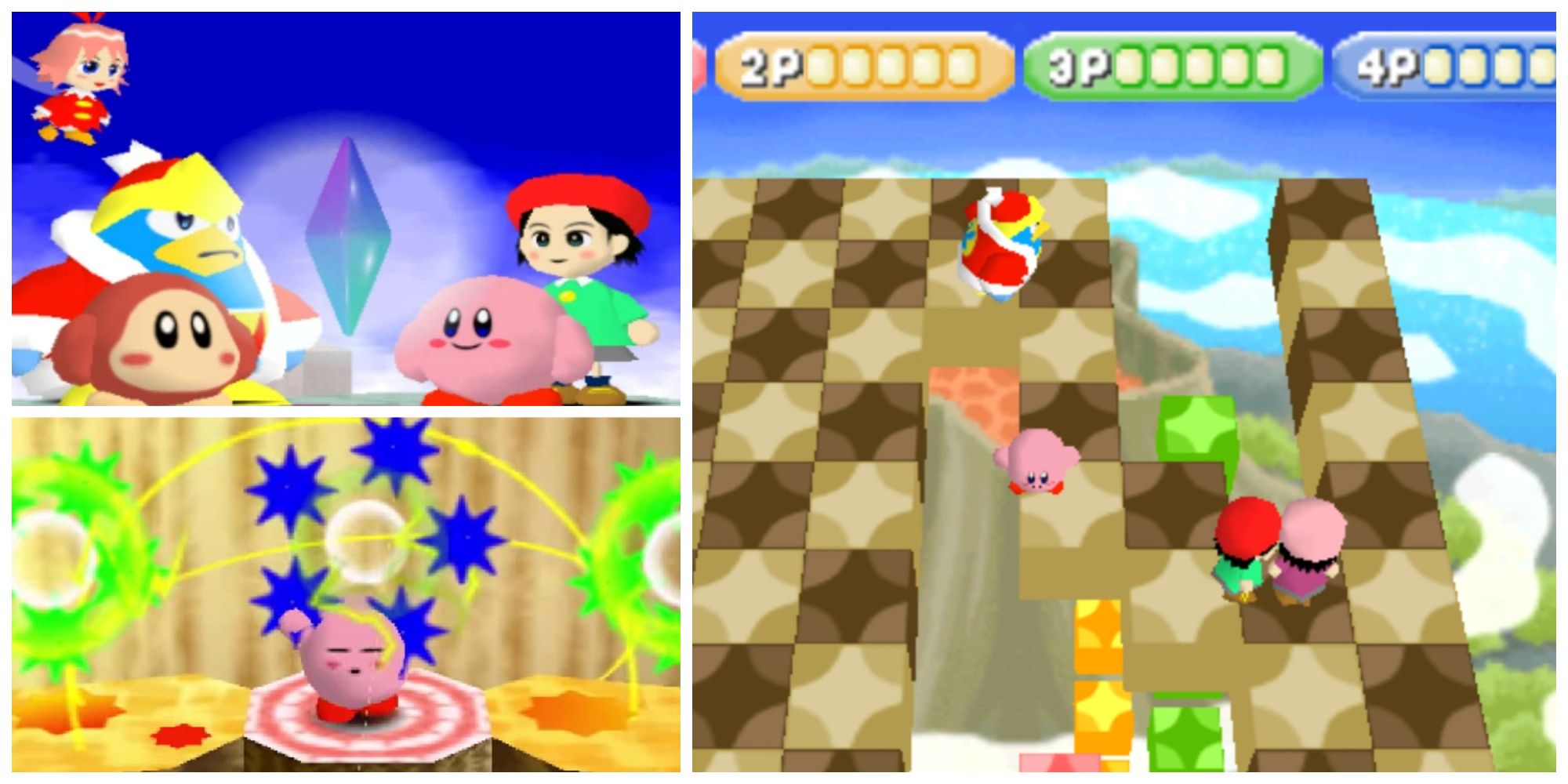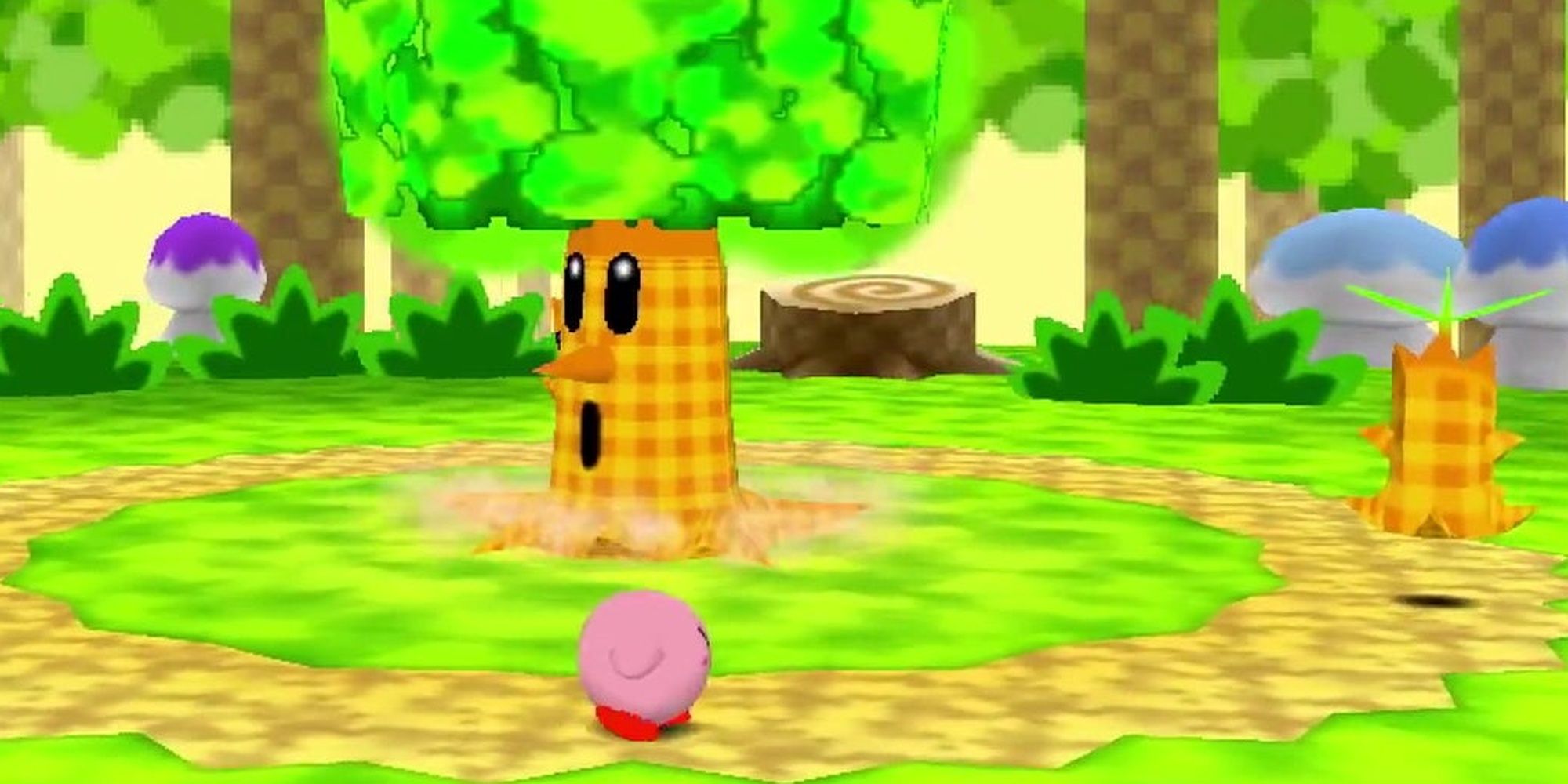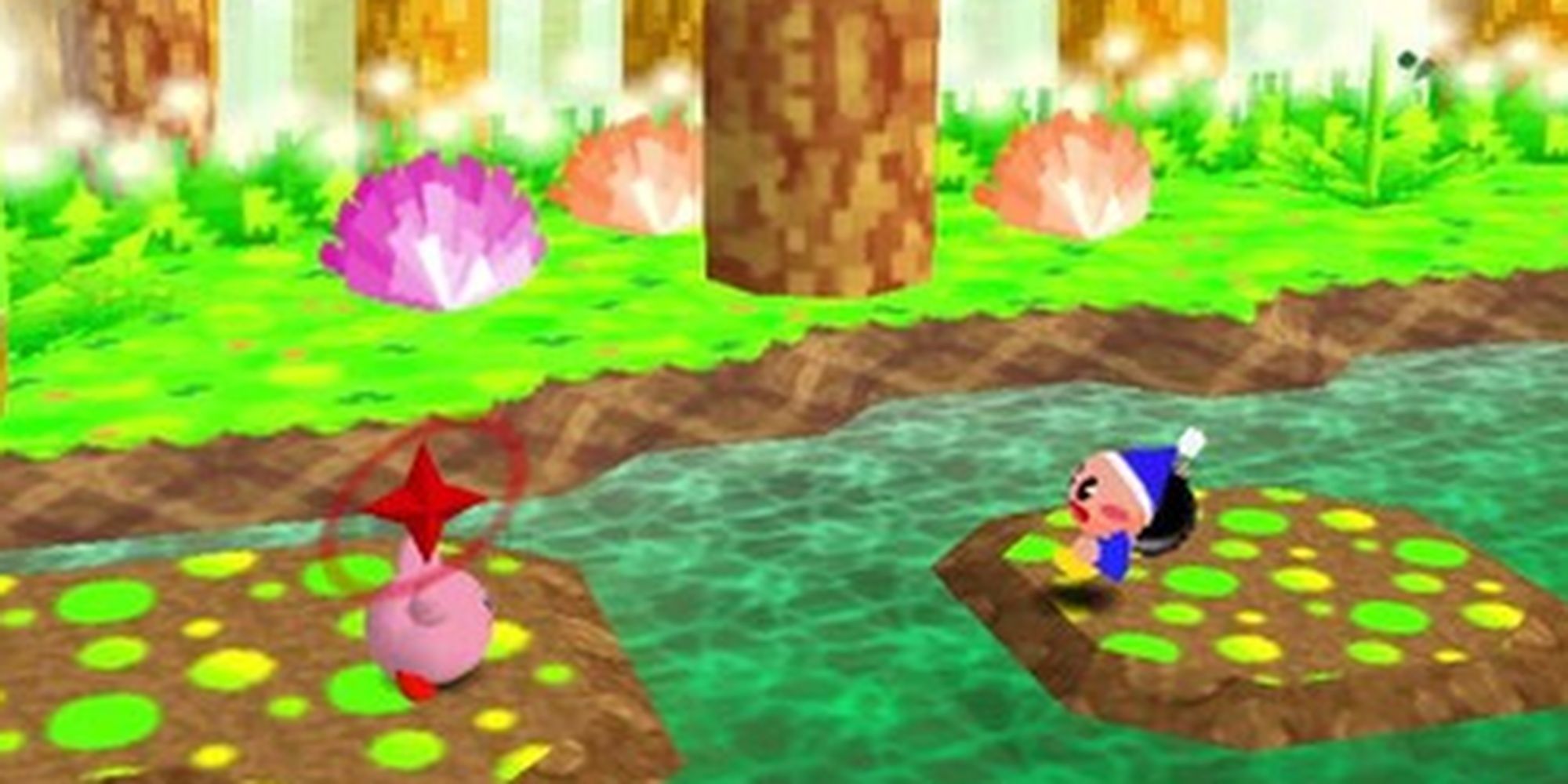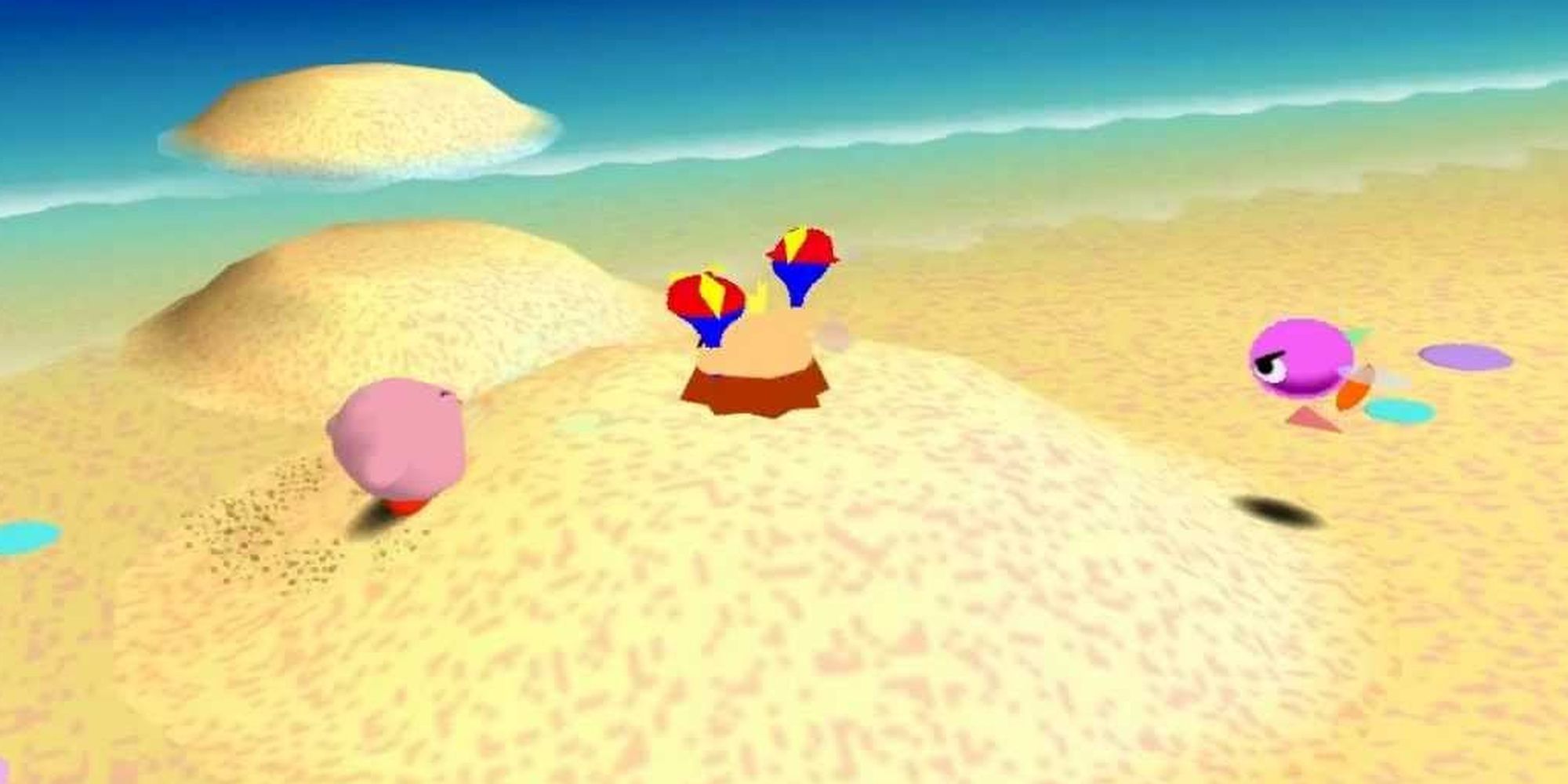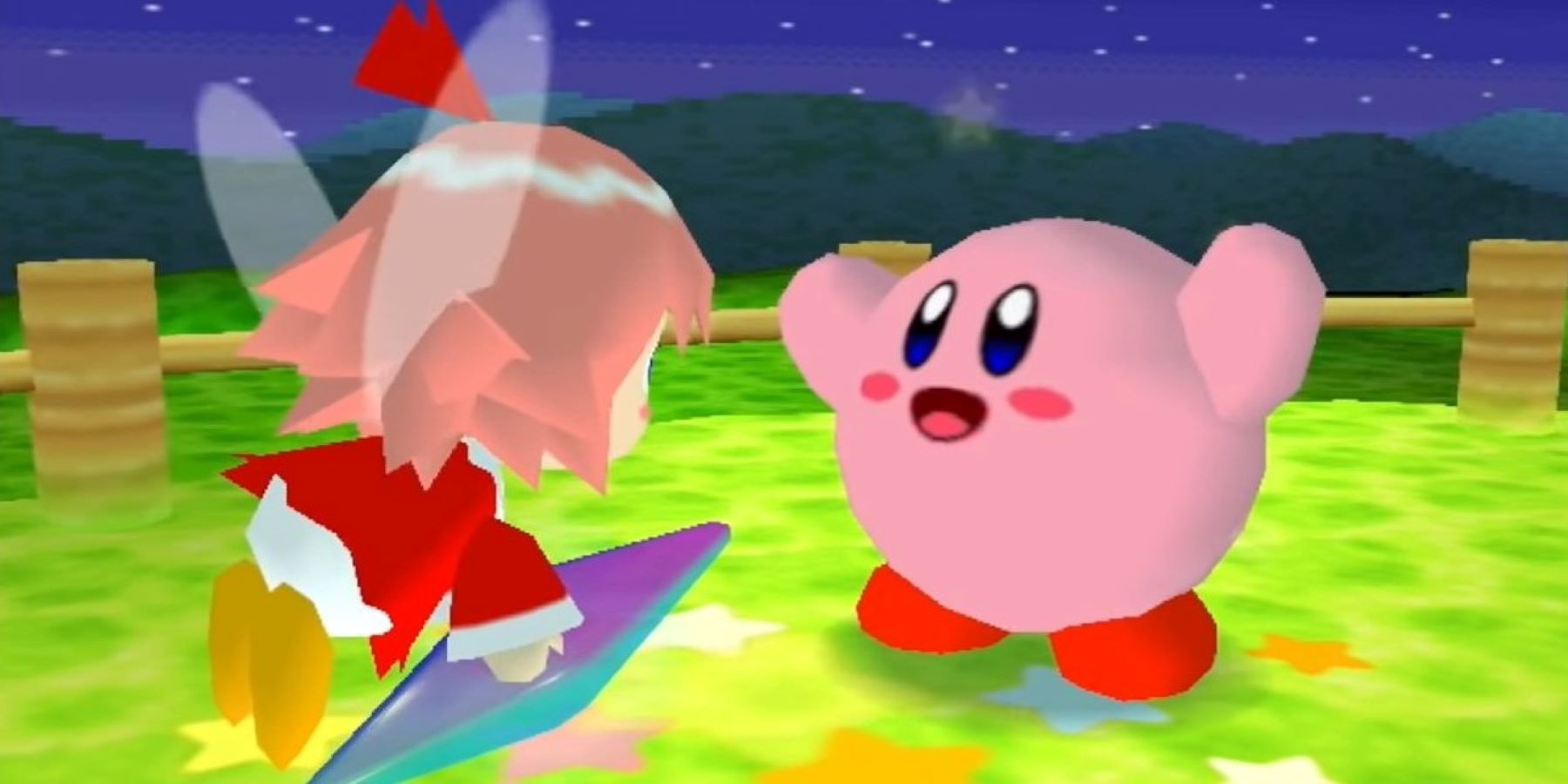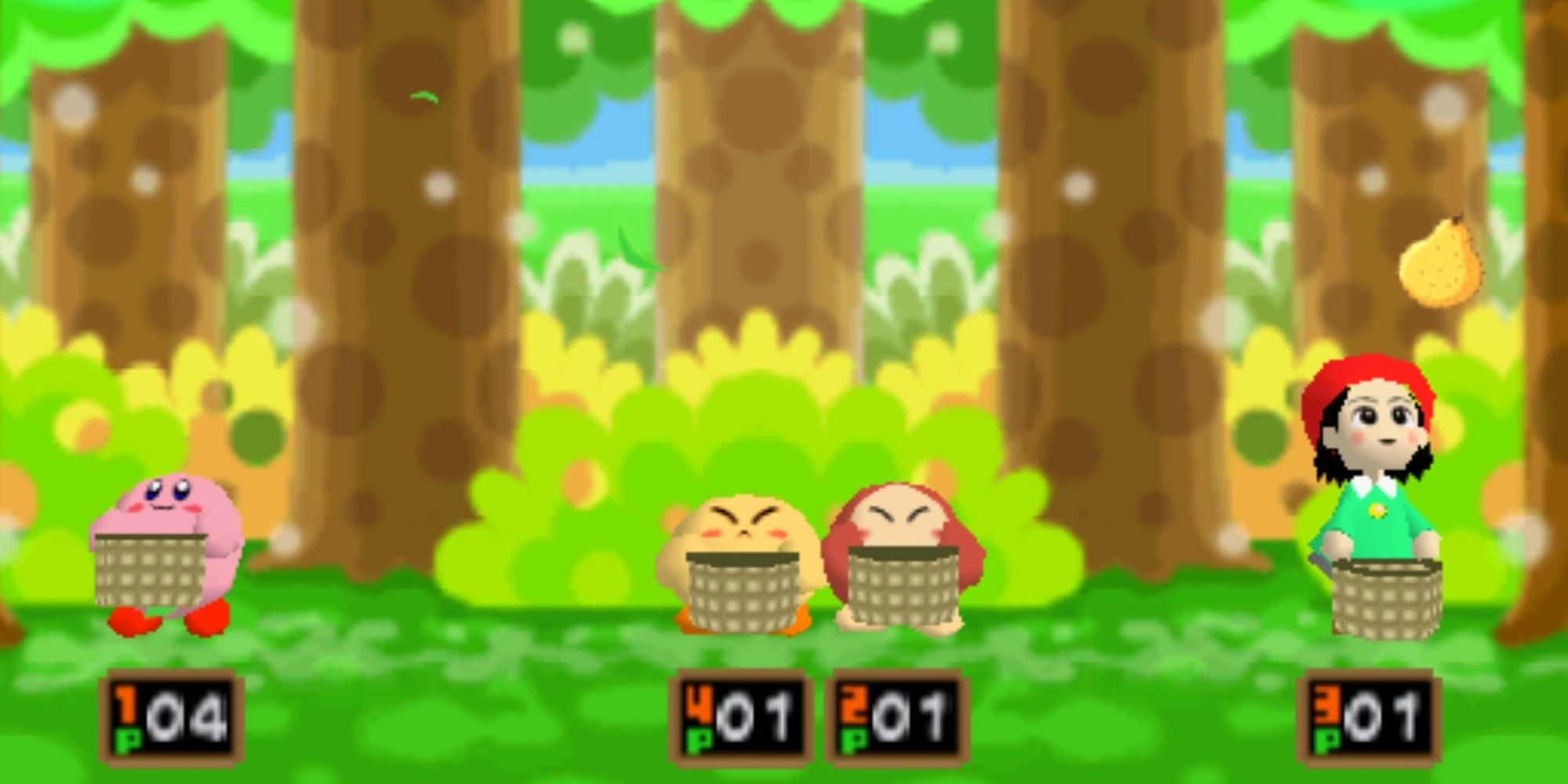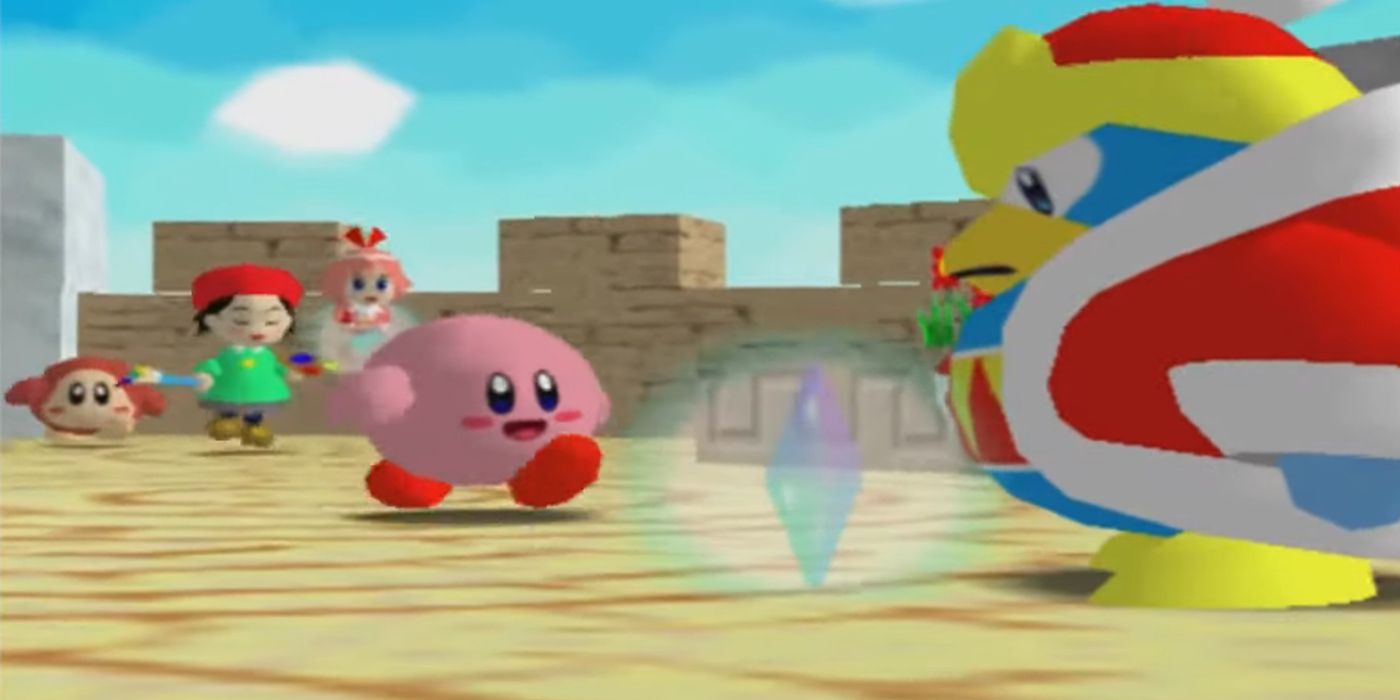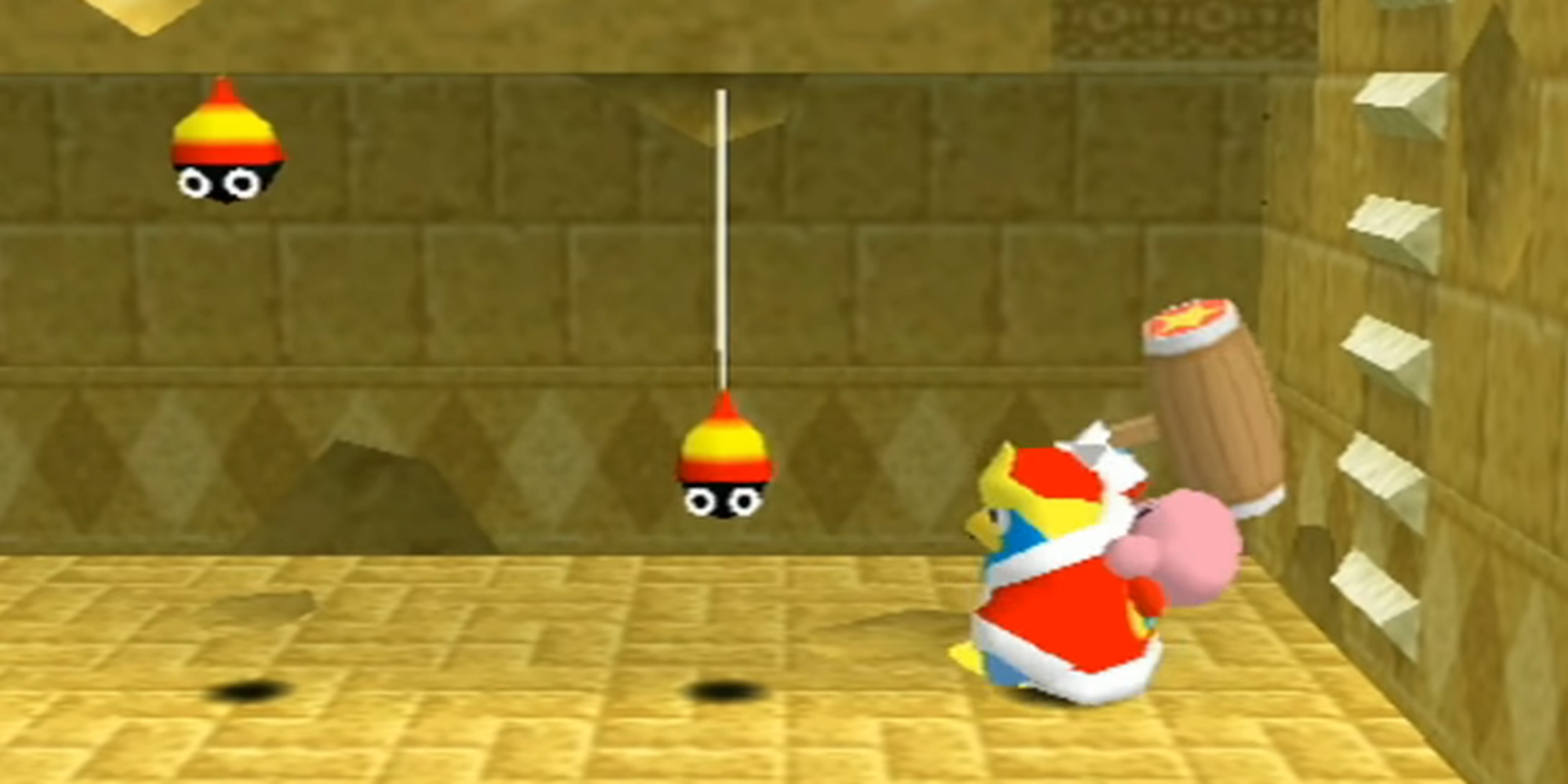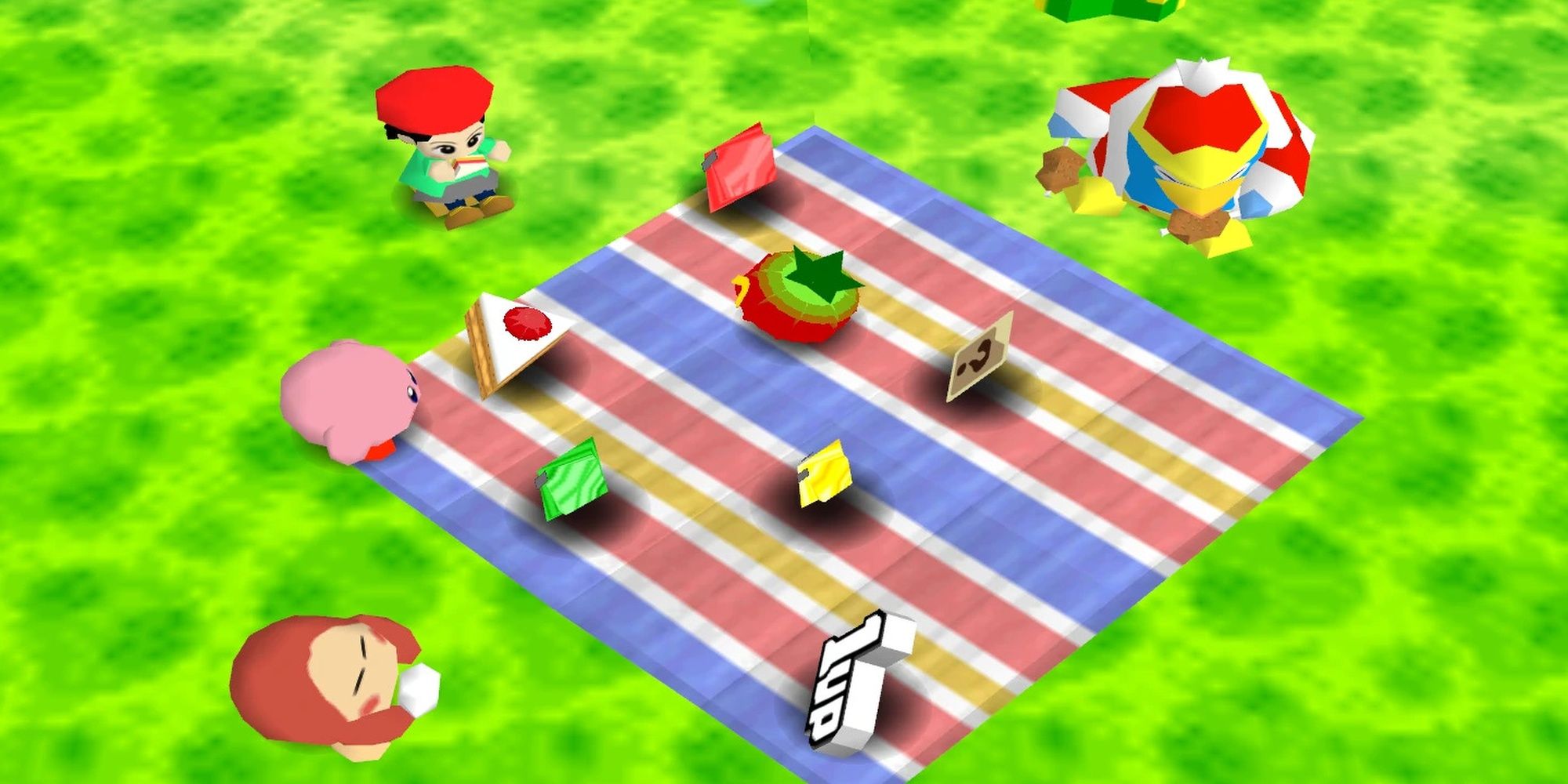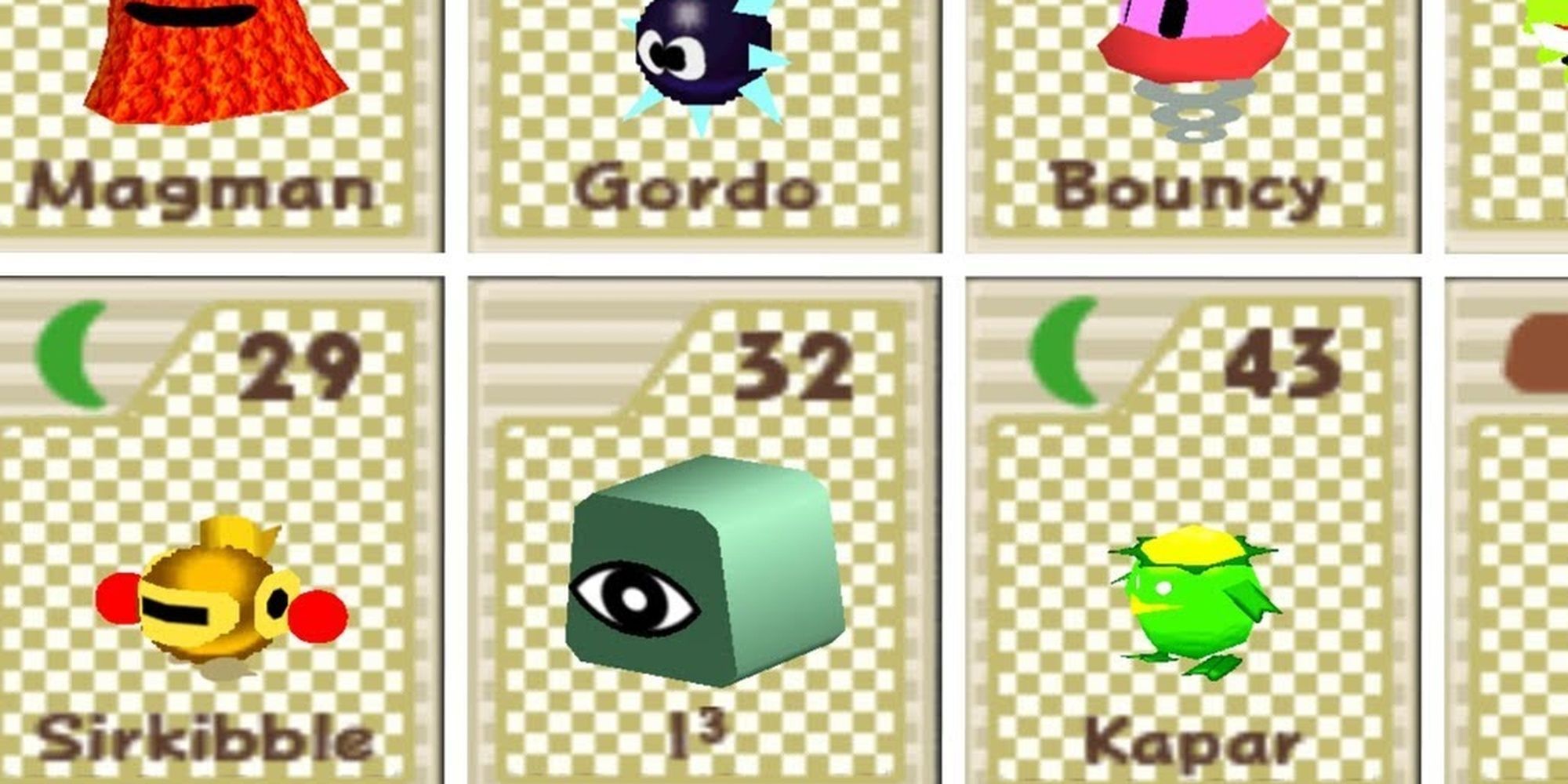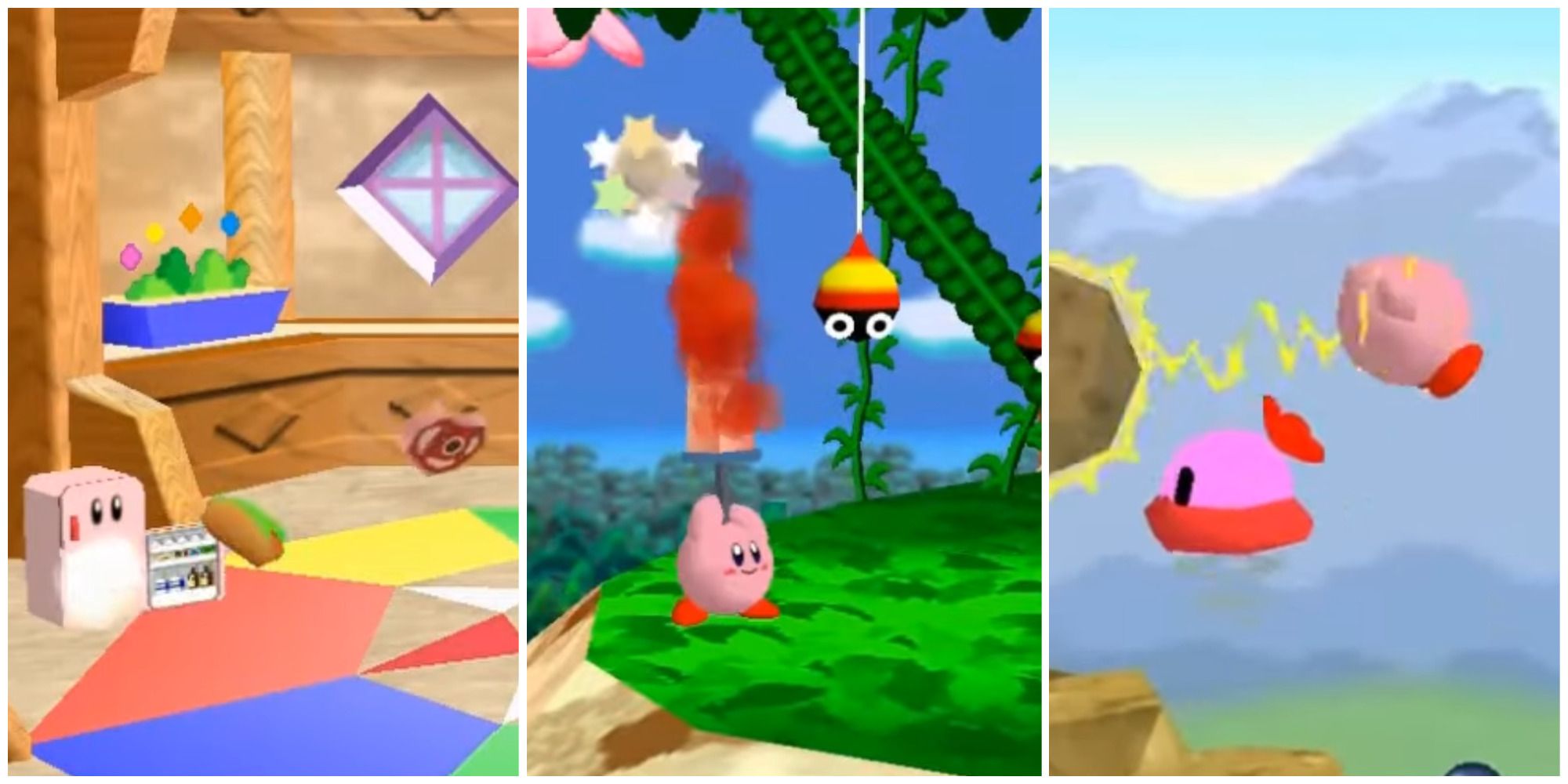Kirby 64: The Crystal Shards is the sole Kirby game on the Nintendo 64, and it can now be played on the company's latest console through Nintendo Switch Online + Expansion Pack. It's considered a main series title, with powers, enemies, and worlds expected from a Kirby game. However, it's a bit of an oddball for the series. As the series' first half-step into the 3d realm, the developers may have wanted to try something unique.
Later Kirby games tended to return to mechanics from Kirby Super Star, leaving some of Kirby 64's features behind, but as the game's enduring popularity suggests, several of those features are still good. Here are a few of them that should be brought back.
10 Background and Foreground
Although Kirby 64 is usually played on a 2-dimensional plane, since Nintendo was still showing off the 3d features of their new console, they included some 3-dimensional elements as well. These were limited but included a few cool effects, including attacks from the background, hidden items shown outside the play area, and a few visually impressive circular rooms.
The use of background and foreground is a nice touch that often doesn't appear in 2d Kirby games, although the more modern releases, on the 3ds in particular, sometimes revisit the concept.
9 Holding Enemies
Pressing up-C in the original game causes Kirby to take his copied power and hold it over his head, allowing him to throw it at other power sources to create combs. A lesser-known use of this ability is triggered when Kirby has an enemy in his mouth: holding the enemy over his head can have a special effect based on the enemy.
When held, projectile throwers will attack the player's foes, flying or swimming creatures will provide a speed boost, and some have bonus effects when thrown. The stone pile enemy, for example, splits into three pieces, hitting multiple times. Not many people used this function since the power combos were so effective, but it was a cool feature that would be a welcome returning element.
8 Exploring the Galaxy
Kirby 64 is divided into six worlds, each with several levels to explore. It's a nice setup that leans into the Kirby series' extraterrestrial side. It's also a good shorthand for players looking for specific abilities to copy: the lava world has a lot of fire enemies, the ice world has ice, and the desert world has rock.
It's not a unique concept for Kirby. Notably, Kirby Super Star featured a mode where planet-hopping was the main progression. It's also not essential, since it's very possible to include several elemental biomes without jumping to a whole different planet, which most Kirby games do. It does, however, add a welcome touch of cosmic magic and a feeling of exploration.
7 The Fairy Kingdom
The throwaway plot of Kirby 64 is that Dark Matter has attacked Ripple Star, a planet of fairies, in an attempt to take their magic crystal. Kirby and friends save Ripple Star in the end, and that's the last time it appears in the series.
It's understandable why the fairy kingdom hasn't made a return appearance. The plot in Kirby games tends to be light and simple (at first glance), and too many recurring characters would weigh the series down with unnecessary continuity. Even so, it would be a pleasant nod for old-school fans, which Nintendo has already acknowledged with the fairy Ribbon, playable alongside Adeline as an extra in Kirby Star Allies.
6 Multiplayer Minigames
Kirby 64 included three minigames that could be played with up to four people: a hopping race, a fruit-catching game, and a battle royale. These could even be played against the computer, with unlockable difficulty modes, adding a little extra content for solo players as well.
Other Kirby games sometimes include multiplayer, usually simple single-button minigames or co-op partners for the campaign. Kirby 64's multiplayer minigames are somewhere in the middle, completely separate from the main game while still being fairly fleshed out. It's a nice extra that doesn't appear often these days, but it still has a place. The restaurant game in Forgotten Land would make a great co-op multiplayer mode, for example.
5 Traveling Companions
In the first area of Kirby 64, Kirby saves a few residents of Popstar from possession by Dark Matter, after which they travel with him across the stars. Not only do they appear in cutscenes and menus, but they show up in several places to provide aid; specifically, Waddle Dee pilots vehicles to help Kirby get around, Adeline paints powerups into existence, and Dedede smashes obstacles with his hammer.
It's a nice touch that makes Kirby 64 feel like a road trip with friends, and it hasn't been used by the franchise since then. It might be better if the focus was kept on Kirby since an ally's support in Kirby 64 often prevents the protagonist from using his signature abilities, but the feeling of comradery would be nice to revisit sometime. Speaking of which:
4 Playable Dedede
King Dedede, the long-standing Kirby antagonist, has teamed up with our hero before. He's not really evil, just a bit selfish, and he usually lends his aid when the real evil appears. Nowadays, when Kirby battles him, he's usually possessed or, in one instance, cloned. But despite his occasionally helpful nature, Kirby 64 is one of the very few times the King has been playable.
It's a shame since it's good fun to beat up enemies with Dedede's massive hammer. He's earned some fans over the years, as well. Sometimes, rival Meta Knight gets a playable role of his own in Kirby games, so maybe Dedede ought to have his own as well.
3 Post-Stage Minigame
An occasional staple in older Kirby games is the post-stage minigame. These usually take the form of a "test of strength" in which the goal is to press the button at the right time. Kirby 64 features a different version, in which a picnic spread is laid before Kirby. He can aim his jump with a pair of button presses, similar to a claw machine, and get a free item.
Later Kirby games haven't included a post-stage minigame, which isn't a terrible thing since it keeps the focus on the stages themselves, which tend to be full of collectables. That said, it's a classic staple that adds a touch more gameplay, and it might be due for a return.
2 Collectable Cards
The real goal in the Kirby 64 post-stage game is to grab a card, which only appears in that minigame. The card has no gameplay benefit, but it gets added to a card collection visible from the main menu. These include animations of every enemy in the game, along with their names. This is the only in-game way players can tell what the enemies and bosses are called!
Card collecting is always a good time, adding a bit of replay value, but the Kirby 64 implementation isn't perfect. Running a stage over and over to try for more cards can get dull fast, and it's possible to get duplicate cards, which are worthless. It's still a fun collectable, though, and Nintendo seems to agree. Forgotten Land includes a very similar feature in the form of capsule figures, which are even more detailed than the cards were.
1 Power Combos
The signature feature of Kirby 64 is the ability to steal abilities from two different enemies and combine them. It's a great system emphasizing experimentation and discovery, and it is fondly remembered to this day. Some Kirby games have revisited this idea in brief, notably Squeak Squad, but only a few combinations in that game produce unique results.
There are obvious downsides to revisiting the power combo system. For one, it takes a lot of work to implement all the options; even with just seven copy abilities, Kirby 64 includes 35 unique powers. It can also lead to a power imbalance, where some abilities are strong enough to make all the others obsolete. Generally, though, the system was well-liked enough for it to be worth another go sometime.
Kirby 64: The Crystal Shards is available as part of Nintendo Switch Online + Expansion Pack.

